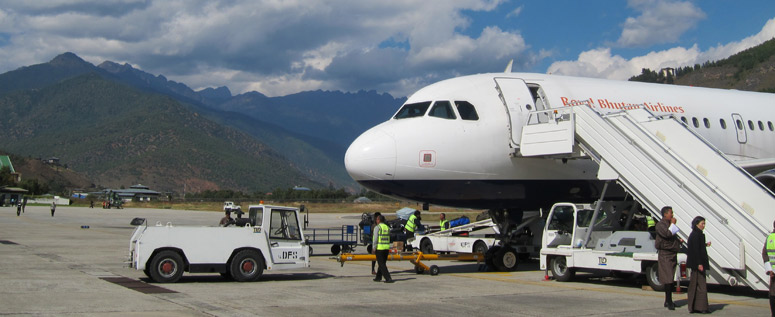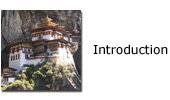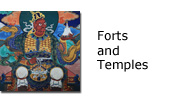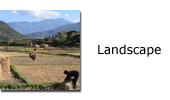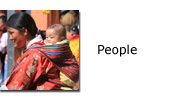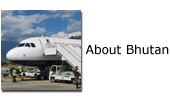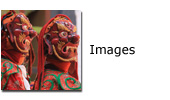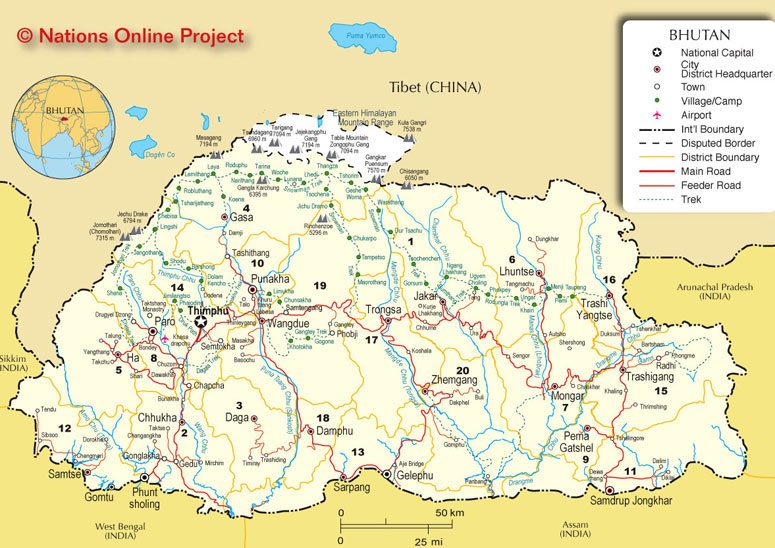
 Bhutan or Drukyul, the Land of the Thunder Dragon, is a small country. 200 miles wide by 100 miles across it sits between India and China on the edge of the Himalayas. However its remote location and mountainous terrain makes it feel much larger and transport is challenging. The only airport is in Paro, although a new one is shortly to open in the South. Thimphu, the capital, is about an hour's drive away however Jakar (or Chamkar) in central Bumthang district is a good 10 hours drive from Thimphu assuming the road has not been blocked by landslides - quite common in the rainy season. Most tourists visit the mid-mountain belt of Western Bhutan. The East is less accessible - easier to enter via Assam, and the North, while popular for trekking, is inaccessible by road.
Bhutan or Drukyul, the Land of the Thunder Dragon, is a small country. 200 miles wide by 100 miles across it sits between India and China on the edge of the Himalayas. However its remote location and mountainous terrain makes it feel much larger and transport is challenging. The only airport is in Paro, although a new one is shortly to open in the South. Thimphu, the capital, is about an hour's drive away however Jakar (or Chamkar) in central Bumthang district is a good 10 hours drive from Thimphu assuming the road has not been blocked by landslides - quite common in the rainy season. Most tourists visit the mid-mountain belt of Western Bhutan. The East is less accessible - easier to enter via Assam, and the North, while popular for trekking, is inaccessible by road.
Drukair is the only airline flying to Bhutan and runs regular flights from Delhi, Bangkok, Singapore, Kathmandu, Dhaka and a few other destinations. Landing in the narrow Paro valley requires skill and is an exciting experience for passengers! Tourism is restricted and tourists must spend at least $250 per day. In fact if you avoid the most expensive hotels this is ample to cover food, accomodation, guides and travel.
The monsoon rains start in June and can continue to the end of September and mountain passes in the North can be blocked between December and March so the best times to visit are October - May avoiding the Winter months if you plan to go trekking in the North. Temperatures in Oct/Nov in central Bhutan can rise to 25C during the day and fall to near freezing at night. It makes sense to wear layers. Suitable clothing is also needed for visiting temples.
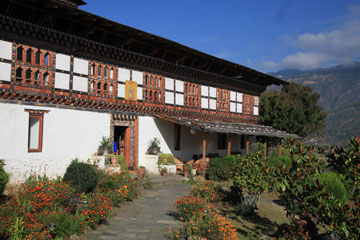 We found hotels comfortable- some were exceptional, for example the Gangtey Palace (left) and Zhiwa Ling hotels in Paro, and the Dewachen hotel in Phobjika. We did not try the expensive Aman resorts. The food is fine - locals live on red rice, vegetables (potatoes, Swiss Chard, mushrooms) and Ema Datsi - a dish of hot green chillis and onions in a cheese sauce. Buckwheat pancakes and noodles are also popular in central Bhutan. Tourists will also get chicken or beef dishes and often pasta. Local beer includes Druk 11000 (very strong at 8%) and Red Panda, a wheat beer. There are a number of very drinkable local whiskies - we preferred Special Courier although K5 and Coronation Silver Jubilee are also good. The local wine is best avoided. Arak, a fiery eau de vie, is drunk by the locals. Bottled water and good local fruit juices are easy to obtain.
We found hotels comfortable- some were exceptional, for example the Gangtey Palace (left) and Zhiwa Ling hotels in Paro, and the Dewachen hotel in Phobjika. We did not try the expensive Aman resorts. The food is fine - locals live on red rice, vegetables (potatoes, Swiss Chard, mushrooms) and Ema Datsi - a dish of hot green chillis and onions in a cheese sauce. Buckwheat pancakes and noodles are also popular in central Bhutan. Tourists will also get chicken or beef dishes and often pasta. Local beer includes Druk 11000 (very strong at 8%) and Red Panda, a wheat beer. There are a number of very drinkable local whiskies - we preferred Special Courier although K5 and Coronation Silver Jubilee are also good. The local wine is best avoided. Arak, a fiery eau de vie, is drunk by the locals. Bottled water and good local fruit juices are easy to obtain.
International Tour operators cover Bhutan. We chose to book directly with a local firm - Namgay Adventure Travel which we found through Responsible Travel- and had excellent service. They also organised flights and visas for us. Tours can be flexed to take in local festivals - we planned ours around the amazing Jakar festival.
The Bhutanese currency is the Ngultrum. This can only be obtained in country so change money when you arrive at the airport. There are few banks outside Thimphu and very few ATMs. The Ngultrum is tied to the Indian Rupee, currently around 52 Ngultrums = USD 1, and Rupees are also accepted for payment. We brought US dollars to change into local currency - we found that hotels gave a better rate for $100 bills than for smaller denomination notes. Like many countries older dollar bills (pre 2000) are often not accepted and it can be hard to get small denomination Ngultrum notes.
Books we read
Bhutan Handbook, Gyurme Dorje (Footprint): a good guidebook with lots of interesting background information although navigation is not so great.
Hidden Bhutan, Martin Uitz: very interesting small book by an Austrian who lived and worked in Bhutan. Trekking, culture personal experience of the country and its people.
Beyond the Sky and the Earth, Jamie Zeppa: a young Canadian teacher comes to work in rural Bhutan and falls in love with the country.
Radio Shangri-La, Lisa Napoli: a radio journalist helps to set up the country's first radio station for the youth of Bhutan.
